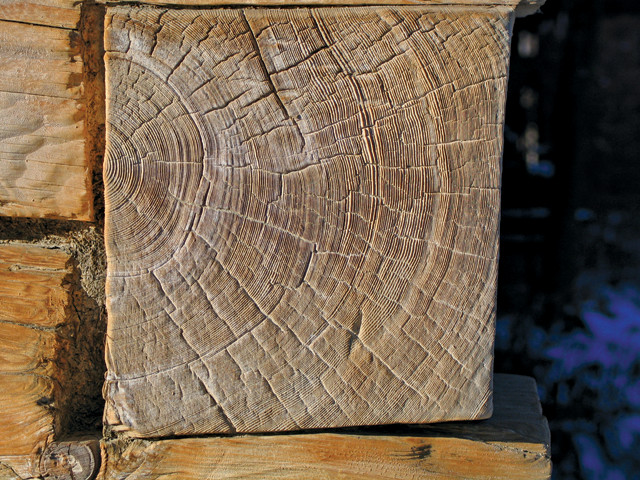
by Lucas Joel Tuesday, September 13, 2016

Tree rings helped researchers piece together a new hypothesis as to why the Mongol army withdrew from western Hungary in 1242. Credit: Ulf Büntgen.
In 1241, the armies of the Mongol Empire, continuing their campaign through Asia and Europe, invaded western Hungary. Before long, however, the Mongols withdrew their forces, beating a sudden retreat that has long baffled historians. Now, drawing on high-resolution climate data from tree rings, researchers may have found a clue as to why: It seems wet weather created adverse conditions for the Mongol army, eventually forcing it to retreat from what was to become historically its westernmost advance.
“The rapid withdrawal was very unusual for the Mongol Empire,” which, until this point, had won a series of decisive victories as it invaded Europe, says Ulf Büntgen, a paleoclimatologist at the Swiss Federal Research Institute in Zurich and lead author of a new study in Scientific Reports looking into the puzzling episode.
Typically, Büntgen says, researchers discuss the effects climate has had on civilization in broad strokes, such as when the so-called Little Ice Age brought cold temperatures — and, as a result, societal changes — to Europe, North America and Asia between about 1550 and 1850. In this study, “we demonstrate that relatively small climatic fluctuations can have an effect on the decision-making of ancient societies.”
Although mid-13th century Mongol documentary records give indications of the army’s position at different times, they unfortunately do not give many clues as to why the retreat happened. These records are “typically very poor … because, as pastoral nomads, the Mongols didn’t leave a lot of documents behind written by themselves,” says Nicola Di Cosmo, a historian at Princeton University and a co-author of the new work. Büntgen and Di Cosmo instead looked at high-resolution tree-ring data, which record year-by-year seasonal climatic variations over the period of interest, from trees across Europe — including from the Carpathian Mountains in Romania and the Austrian Alps, relatively short distances to the east and west of Hungary — to reconstruct temperatures and precipitation over the continent.
They found that in the years leading up to the Mongols’ arrival in western Hungary, the weather was ripe for invasion, with above-average temperatures and less precipitation from 1238 to 1241, Büntgen says. “Conditions were most likely favorable for expansion of the Mongol army westward. But then, from 1241 to 1242, there was a sharp decline in temperature together with a surplus of precipitation,” he says.
The cold winter of 1241 and 1242 caused the Danube River to freeze over, which allowed the army to pass into western Hungary, according to the few documentary sources that do exist. “But then they were soon stuck,” Di Cosmo says, for with the spring months came wet conditions that brought out the worst in the surrounding Hungarian plains, which have a high water table and flood easily. The Mongol army, heavily dependent on horses, found itself immobilized in marshy conditions brought on by heavy precipitation. The army “went through a series of failed attempts to take a few towns and cities,” he says, “and then in the late spring, they started to withdraw,” seemingly with little other explanation. Di Cosmo says the tree rings provide enough evidence that a climatic hypothesis for the Mongol withdrawal should now be taken seriously among historians who, he notes, tend not to be “easily persuaded by climatic explanations for such events.”
“This is a very intriguing article,” says Fredrik Ljungqvist, a medieval historian and paleoclimatologist at Stockholm University in Sweden who was not involved in the new work. Other studies have analyzed tree-ring data in tandem with historical records before, but “most previous attempts to use natural science data in historical studies … have been hampered by the lack of such high-precision data” as was used here, he says.
Ljungqvist says it is still difficult to assess how important the climate — and the wet and muddy conditions it brought — was in terms of forcing the Mongols out of Hungary. “It may have happened anyway due to political reasons,” he says, noting that the death of Great Khan Ögödei, the Mongol Empire’s leader, in December 1241, for instance, may have caused upheaval within the empire’s ranks that spurred the withdrawal. Still, knowing there was poor weather is a key piece of the puzzle, he says, as “siege warfare becomes even more difficult when it’s wet and muddy and you are trying to take a fortress by storm through deep mud.”
© 2008-2021. All rights reserved. Any copying, redistribution or retransmission of any of the contents of this service without the expressed written permission of the American Geosciences Institute is expressly prohibited. Click here for all copyright requests.